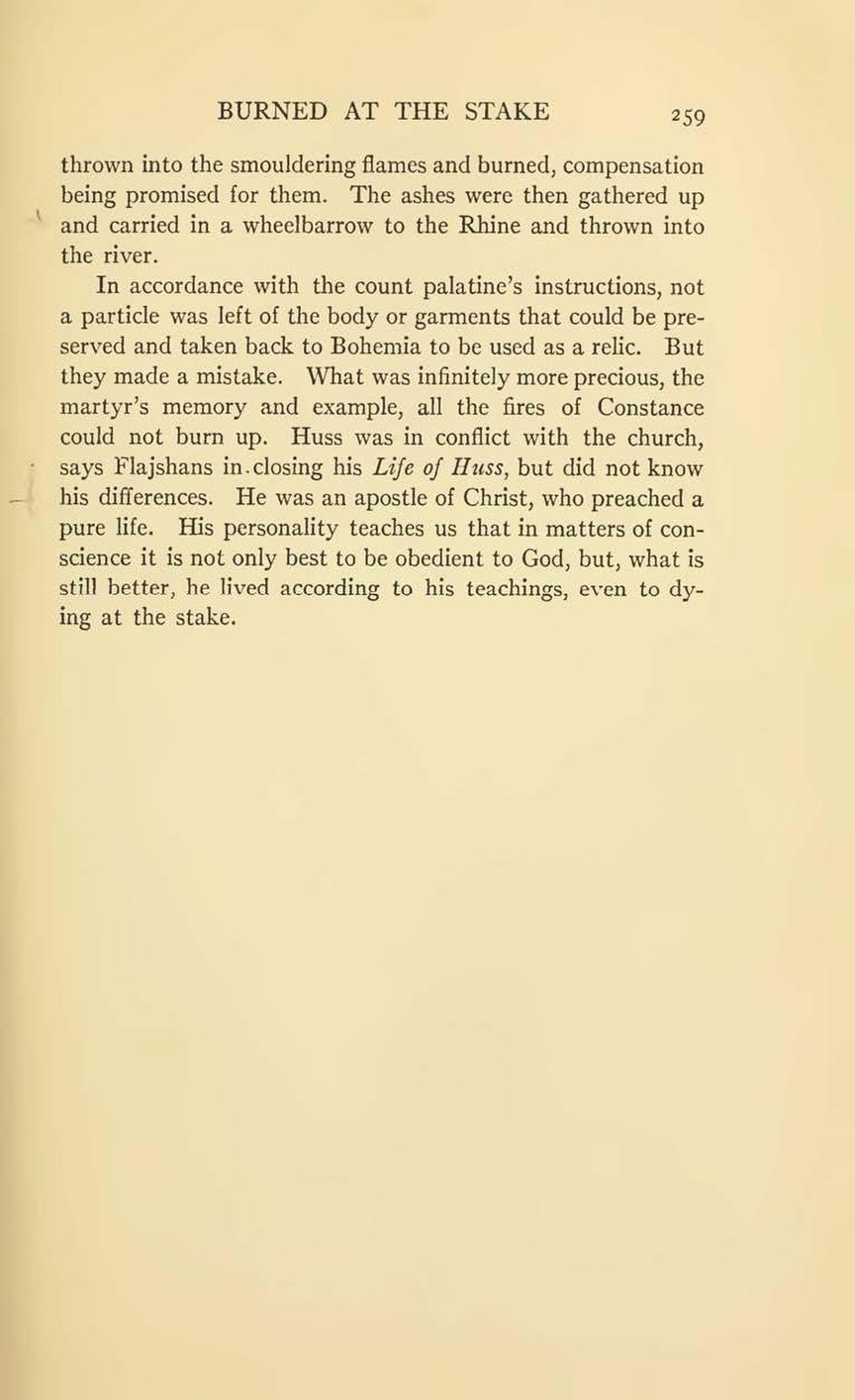thrown into the smouldering flames and burned, compensation being promised for them. The ashes were then gathered up and carried in a wheelbarrow to the Rhine and thrown into the river.
In accordance with the count palatine’s instructions, not a particle was left of the body or garments that could be preserved and taken back to Bohemia to be used as a relic. But they made a mistake. What was infinitely more precious, the martyr’s memory and example, all the fires of Constance could not burn up. Huss was in conflict with the church, says Flajshans in closing his Life of Huss, but did not know his differences. He was an apostle of Christ, who preached a pure life. His personality teaches us that in matters of conscience it is not only best to be obedient to God, but, what is still better, he lived according to his teachings, even to dying at the stake.
